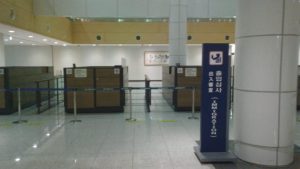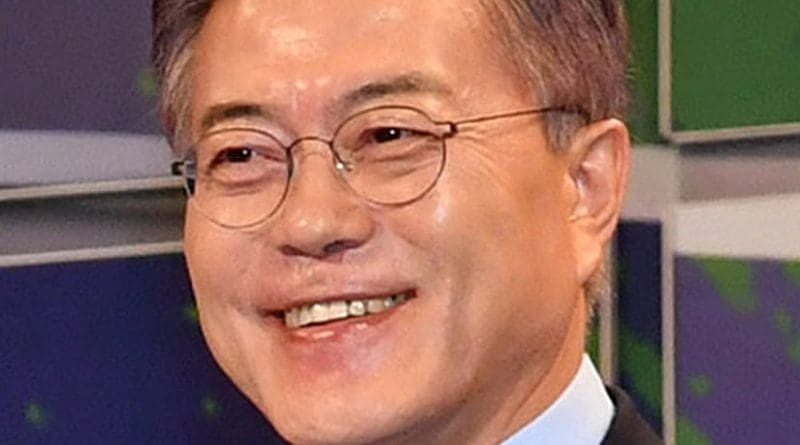After North Korean Missile Test, South Korean President Takes A Stance – OpEd
By Published by the Foreign Policy Research Institute
By Benjamin Katzeff Silberstein*
(FPRI) — North Korea’s latest ICBM test—conducted on July 28—was not as big of a shock as the one preceding it. The message North Korea sent with its initial test on July 4 was loud and clear: the country can hit the United States mainland with its missiles, and perhaps soon with nuclear weapons. The second missile launch primarily served to drive home that point, and to do it with a vengeance. The missile North Korea launched in the late evening hours of Friday, July 28 reached an altitude of 3.7 kilometers and flew 998 kilometers, metrics that Pyongyang claims shows its ability to hit the entire territory of the United States. On Tuesday, August 1, evidence surfaced that North Korea may have carried out another test of a submarine-launched ballistic missile (SLBM) during the preceding weekend, proving the mobility of its missile-launching capabilities.
North Korea’s ICBM capacities means that when it threatens to annihilate its enemies for various reasons (as Pyongyang does from time to time), these words carry force. But overall, it does not change the strategic environment very much. It has long been known that North Korea’s ICBM- and nuclear-capacities are advanced, and as U.S. officials have pointed out, for the past few years, it has only been a matter of time before North Korea displays these capacities in a credible way.
In fact, one of the most important implications from the ICBM-test came from South Korea. When South Korean President Moon Jae-in vowed in the day after the test to deploy more interceptor missile launchers for the country’s controversial anti-missile defense system, Terminal High Altitude Area Defense, more commonly known by its acronym, THAAD, it was a radical turnaround from his previous positions. North Korea had probably hoped to drive a wedge between the U.S. and South Korea through its missile tests and other provocations in the months following the election of a left-leaning government in South Korea. As of now, it looks like those ambitions have failed.
Only a few weeks ago, this outcome seemed far from certain. Moon is a leftist politician, and his skepticism of THAAD’s deployment is well known. Donald Trump calling on South Korea to pay hefty amounts for the system earlier this year also did not help. The South Korean left has historically been wary of too much U.S. influence and presence in the country, and the left in South Korea has long favored cooperation, exchange, and negotiation with North Korea over sanctions.
At times, divergent attitudes on the North Korea question has caused significant strain between the two countries. For example, in the early 2000s, when South Korea was governed by the liberal Roh Moo-hyun and the U.S. by George W. Bush, the two often differed in their approaches to North Korea. While Bush had branded North Korea part of the “Axis of Evil,” Roh was an avid proponent of the “Sunshine Policy” of cultural and economic collaboration with North Korea, with the long-term goal of peaceful unification of the two countries.
To put it very mildly, Trump and Moon also differ in their approaches to North Korea. Trump has often vowed to pressure North Korea into making concessions on its nuclear and missiles programs, while Moon is a known advocate of talks and exchange with North Korea. Just to name a few examples, Moon Jae-in has pledged to re-open the Kaesong Industrial Complex in North Korea, where South Korean firms operate factories with North Korean employees, which was closed under the Park Geun-hye administration in February 2016 in response to North Korea’s nuclear test and satellite launch in the preceding weeks. The administration has a long and ambitious wish list for economic cooperation projects with North Korea. Moon’s administration has repeatedly asked North Korea for military talks, only to be met with silence. Moreover, accusations surfaced in the run-up to the elections that Moon, as chief presidential secretary for Roh Moo-hyun, accepted the suggestion that South Korea ask North Korea for its opinion before abstaining from a vote on a UN resolution condemning human rights violations in North Korea.
Moreover, one should not underestimate the desire among significant portions of the South Korean governmental bureaucracy and other institutions for closer ties with North Korea. Within the Ministry of Unification in Seoul, which is a ministry dedicated wholly to matters related to North Korea, there seems to have been cautious hope that finally, those programs of cooperation with North Korea that died under the two preceding conservative presidents would once again be started under President Moon. Though often seen as a long-term, distant goal, the very idea of unification with North Korea is rarely questioned in the general political debate in South Korea.

Near the North Korean border in South Korea, symbols abound of the currently broken dreams of inter-Korean exchange. At the Dorasan train station and inter-Korean transit center near the border, for example, where South Koreans working in the Kaesong Industrial Complex would pass through on their way to North Korea, all is set up for traffic to resume. When I visited the Dorasan transit center a few weeks ago, the customs transit forms were neatly piled up, and metal detectors and immigration inspection desks were all in place. There was only one thing missing: people in inter-Korean transit.
In other words, ambitions and hopes for closer relations with North Korea have long been present in South Korea, and the newly elected president carries them as well. North Korean strategists had likely hoped that their missile tests this spring and summer—one only a few days after Moon Jae-in’s election in May—would force Moon to eventually indicate through his response (or perhaps lack thereof) that better relations with North Korea are more important than the alliance with the U.S. Moon’s response to the latest ICBM-test went the opposite direction, with the decision to employ more THAAD units. Not only that—Moon’s administration has requested talks with the U.S. about allowing South Korea to boost its own arsenal of missiles, which it is currently barred from doing under a bilateral treaty. Perhaps President Trump will pronounce this a victory for his own policy of pressuring allies with U.S. troops stationed in their countries to pay for larger shares of their own defense costs.
It may not have been North Korea’s intention, but its ICBM-tests have helped Moon Jae-in clarify where South Korea stands. This clarification may not change anything regarding North Korea’s nuclear and missiles programs in the immediate term. But for those who worried that the alliance between South Korea and the U.S. would suffer with presidents of diametrically opposed political camps, it is a welcome development.
About the author:
*Benjamin Katzeff Silberstein is an Associate Scholar with FPRI, focusing primarily on the Korean Peninsula and East Asian region. He is a doctoral candidate in the Department of History at the University of Pennsylvania, where he researches the history of surveillance and social control in North Korea, and a co-editor of North Korean Economy Watch. He publishes regularly on Korean affairs in publications such as IHS Jane’s Intelligence Review and The Diplomat, and has previously worked as a journalist, and has been a special advisor to the Swedish Minister for International Development Cooperation.
Source:
This article was published by FPRI.

